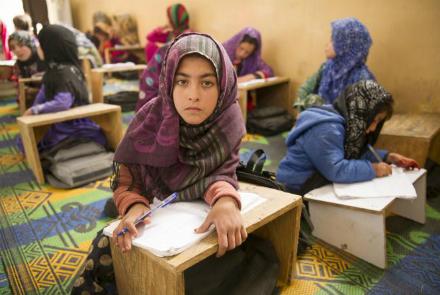Save the Children, a humanitarian organization with a presence in Afghanistan, marked the October 7th anniversary of the post-9/11 intervention with a severe call to action:
“It’s time to stop this war on children. If international humanitarian laws are breached children suffer from it, there needs to be an independent investigation with the aim of holding perpetrators to account. The international community must not forget these children, who are in dire need of mental health support, education, and (who should) be able to feel safe,” said Onno van Manen, country director of Save the Children in Afghanistan
The statement comes amid a time of aggressive counterinsurgency air strikes and coordinated attacks by US, NATO and Afghan forces, as well as increasingly complex attacks by the Taliban, as well as other groups such as Daesh and Al-Qaida. In both cases, the current battle tempo and tactics are contributing to high civilian casualties, and the reports of killed or wounded children are not uncommon in daily news reports.
Onno van Manen continues: “This day marks not one, but several generations losing out on their childhood. For the sake of all Afghan children and the future of Afghanistan, the warring parties must do everything in their power to stop killing and maiming children during this terrible conflict and adhere to international laws and standards. That includes making sure schools and hospitals are not targets.”
The numbers provided on Monday by Save the Children:
• Over 12,500 children were killed or maimed in the violence between 2015 and 2018, 274 children were recruited for combat or support roles
• More than 3.7 million children are currently out of school, 60 percent of them girls
• At least 700 schools are closed because of the violence in 2018 .
• 3,8 million children need humanitarian assistance, 600,000 of whom are severely malnourished
• Between 2014 and 2018, over 8,000 civilians fell victim to explosives such as IED’s and mines. 84 percent of the victims of explosive remnants of war are children.
• 280,000 people fled their homes this year, more than half of them children
The statement ended with the following remarks by the country director:
“Imagine turning 18 while having known nothing but conflict and war in your country. Daily life in Afghanistan means having to fear explosions, not going to school because it’s too unsafe, not knowing if your parents or siblings will come home as they might have been killed. Violence was everywhere over the last months: in August alone, an average of 74 people were killed every day.
“It is concerning to see that children are getting used to these levels of violence. They hear an explosion, scare, shrug, and go on with their day. Children are resilient, but no child should consider the sound of explosions or attack helicopters normal. Children in Afghanistan need to be protected, feel safe, be able to go to school and work towards a bright future.”


